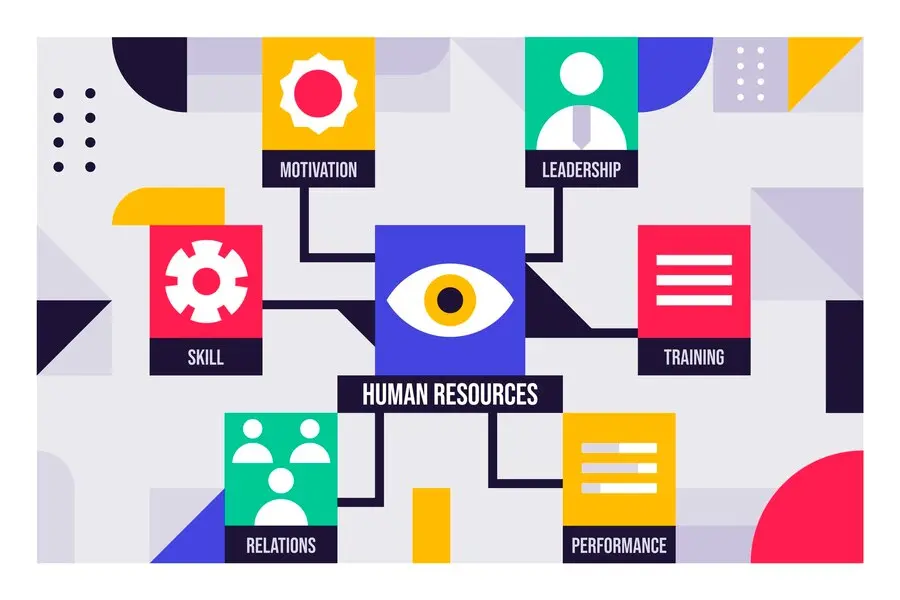The primary function of performance management software is to keep track of an employee’s performance. It helps keep a measurable and consistent record of the work done and progress made. This whole system is based on a mix of methods and technology that ensures individual goals align with the company.
Therefore, it often becomes tough to manage such a wide system. This is where competency framework software comes in. What competency mapping does is that it establishes a structure. Study shows that over 80% of employee turnover happens because of mis-hiring, something that can be fixed with appropriate competency mapping.
The system relies on a collaborative effort where employees and managers work together to develop the company. They identify and set real goals, and share regular reports. These regular reports are to ensure proper work management. The software establishes a regular unbiased system that allows an employee to develop and grow.
Understanding Competency Mapping
Traditional review processes cost over $35M for every 10,000 employees as reported by a recent Gallup survey. It is also significantly time-consuming, something that modern management does not wish to invest in any longer. In such a scenario, performance management software with tools like competency mapping is a huge help. This is a management strategy that evaluates employees and candidates in a methodical, structured way that can be easily replicated.
The goal of this method is to thoroughly understand every department’s and individual’s skills, knowledge, motives, social roles, and traits along with any kind of prominent gap in these characteristics.
This can also be compared to certain competencies and skills that are needed for specific roles to measure whether a candidate is the ideal fit or what training they may need for improving. Regardless, it is vital to remember that some competencies can be difficult to gauge and may not be improved by performance management software. However, such software provides more opportunities for growth so that every employee gets to perform to their maximum potential.
Employees are assessed against particular competencies to understand what the company expects from them, their current position, as well as what they need to work on within every competency. Employees will then be given tasks that utilise their potential and strengths along with mentoring and training that allows improvement.
Analysing Competency Levels
The scale of measurement is not a competency framework software but an element or a component within the mapping process. Here are the four levels of this scale:
Foundational/ Basic
This is the most basic competency level where the company expects an employee to have foundational skills, experience, and knowledge. This allows them to conduct simple basic tasks that do not need frequent or extensive instructions. At this level, an employee has a limited understanding of not only their work but also of the company’s primary process and goals.
Developing/Intermediate
At this intermediate competency level, the employee has the experience, knowledge, and skills to complete standard tasks independently. However, they may need guidance before being able to carry out complex tasks. Regardless, the focus here is to develop active experiences and enhance basic skills.
Proficient/Advanced
At this level, employees must possess the necessary skills, experience, and knowledge to take initiative, handle tough or complex tasks, and train other members. Generally, these employees do not require any guidance or supervision as they are consistently using that competency.
Mastery/Expert
This is the final competency level within the scale where an employee has become a master or an expert in a specific competency. Others will regard you as the authority for your knowledge, skills, and experience. They will also consider you a key resource for advice. You will be able to utilise this competency with prowess.
Analysing competency levels ensures that an employee is able to learn vital skills with precision gradually. This prevents employees from feeling overwhelmed and getting the right guidance. A Deloitte Talent 2020 Survey reports that proper recognition and support are among the top causes that retain employees.
Performance management software highly depends upon competency mapping to ease tracking and development. It helps in mapping out tangible objectives for leaders to reach. This helps them have a proper plan to track and observe if the goals are being met.
What Is the Mapping Process?
Following are the key steps that help management develop the right plan for competency mapping:
- Conducting Job Analysis
Job analyses are generally done by conducting personal interviews or by using a questionnaire. This helps management analyses the skills of existing employees and highlight how every employee relates to their job role. Here performance management software can ensure an unbiased perspective of analyzing skill and progress.
- Identifying Core Competencies
The job analysis data can be checked to understand the core competencies that each role requires. This can include skills, knowledge, ambition, and motives.
- Defining Proficiency Levels
Every competency needs to have a scale that assesses if an employee is competent enough within the given competencies.
- Validating These Competencies
The very next step in the process of competency mapping is to validate these identified competencies by asking for feedback and input from employees in their respective roles.
- Organizing the Framework
A competency model is a combination of all the competencies needed for a specific function or role. This provides a framework that is tangible and suitable for gap analysis, and performance management.
Conclusion
In conclusion, performance management software can be used in several ways. Studies report that over 33% of employees wish for regular feedback and feel motivated by one. Since competency mapping is a vital aspect of such software, businesses use it to support hiring or promotion decisions. It can also be vital in many HR processes like evaluating employee performance and sorting through the records. They are, however, essentially used in leadership development and succession planning.


